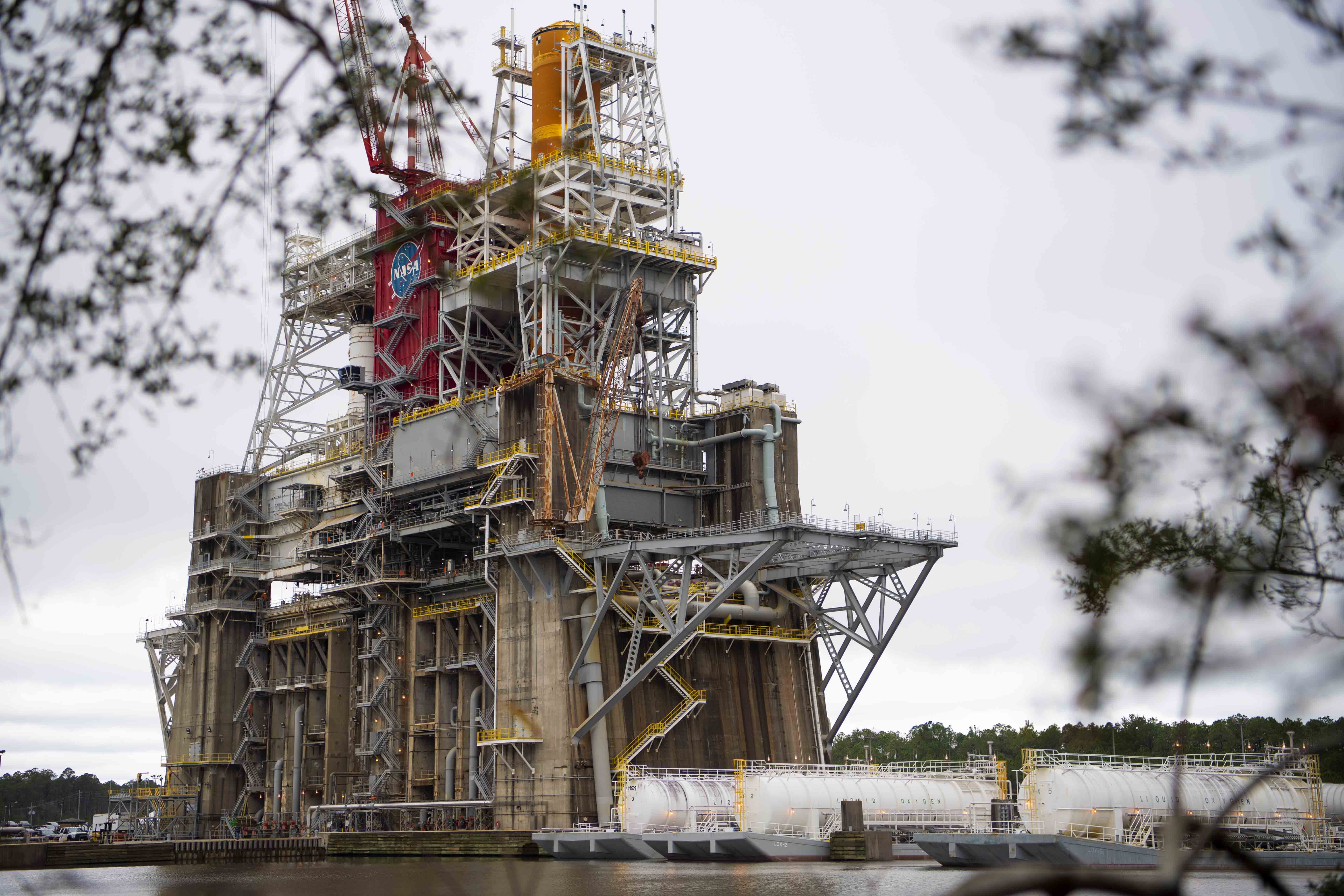NASA will fire up its SLS moon megarocket in final 'green run' test this month
The hot-fire test could happen as early as Jan. 17.
Despite a new valve issue, NASA says it's ready to proceed with the next stage of testing the megarocket that will send the uncrewed Artemis 1 mission to the moon in November.
Initially, the Space Launch System (SLS) rocket performed well during the series of "green run" tests this fall. That said, ground equipment problems held up the final "wet dress rehearsal" procedures until late in December, when NASA was trying to fill the core stage with fuel.
The agency and contractor Boeing, which is building the rocket's core stage, made another attempt last month, and a new issue arose during the next test attempt on Dec. 20, NASA said in a blog post Tuesday (Jan. 5). But a fix was implemented that should allow everyone to move ahead with the next stage of testing — a "hot fire," which will happen no earlier than Jan. 17, NASA officials said in the blog post.
"The end of the [Dec. 20] test was automatically stopped a few minutes early due to timing on a valve closure," NASA added. "Subsequent analysis of the data determined the valve's predicted closure was off by a fraction of a second, and the hardware, software, and stage controller all performed properly to stop the test. The team has corrected the timing and is ready to proceed with the final test of the Green Run series."
Video: NASA's SLS rocket core stage will soon be test fired
Related: NASA's SLS megarocket 'hot fire' test delayed after early shutdown in fueling trial

In the same statement, Julie Bassler, SLS stages manager at NASA, added that other parts of the testing went according to plan, including the green run software, the core stage and the stage controller. Also, there were no leaks during a two-hour period when the rocket tanks were loaded up with fuel. "Data from all the tests to date has given us the confidence to proceed with the hot fire," Bassler added.
The hot fire will move to testing all four SLS core stage RS-25 engines — the same type of engines used on the space shuttle. During the test, the engines will fire for up to eight minutes on the test stand at NASA's Stennis Space Center in Mississippi. Should the hot fire proceed to plan, NASA and Boeing plan to refurbish the core stage and ship it by barge to the Kennedy Space Center in Florida, for final assembly and launch.
Get the Space.com Newsletter
Breaking space news, the latest updates on rocket launches, skywatching events and more!
NASA is working hard to get all of its equipment ready to send humans to lunar orbit by 2023 — a mission for which it has already signed a memorandum of agreement with Canada, to send one of that nation's astronauts around the moon. A crewed lunar landing is then scheduled for another mission in 2024, using some of the "Artemis Team" astronauts that NASA announced last month.
Also in December, Congress' omnibus spending bill, which gave NASA $23.3 billion for the 2021 fiscal year, allotted $850 million to the Artemis human landing system, roughly a quarter of NASA's $3.3 billion request. NASA administrator Jim Bridenstine warned the National Space Council on Dec. 9, before the spending amount was confirmed, that the full budget request is needed to reach the moon in 2024. "Ultimately, if we don't get the $3.3 billion, it gets more and more difficult," he said at the time.
Follow Elizabeth Howell on Twitter @howellspace. Follow us on Twitter @Spacedotcom and on Facebook.
Join our Space Forums to keep talking space on the latest missions, night sky and more! And if you have a news tip, correction or comment, let us know at: community@space.com.

Elizabeth Howell (she/her), Ph.D., was a staff writer in the spaceflight channel between 2022 and 2024 specializing in Canadian space news. She was contributing writer for Space.com for 10 years from 2012 to 2024. Elizabeth's reporting includes multiple exclusives with the White House, leading world coverage about a lost-and-found space tomato on the International Space Station, witnessing five human spaceflight launches on two continents, flying parabolic, working inside a spacesuit, and participating in a simulated Mars mission. Her latest book, "Why Am I Taller?" (ECW Press, 2022) is co-written with astronaut Dave Williams.









